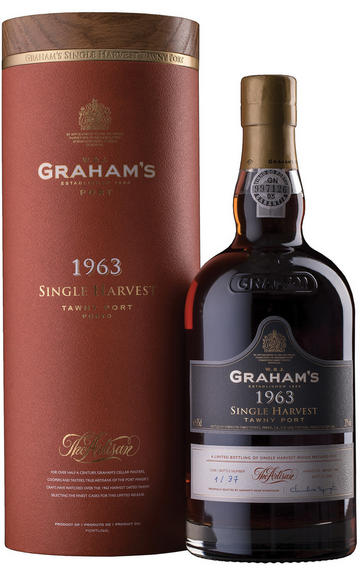
1963 Graham's, Single Harvest Tawny Port, Portugal
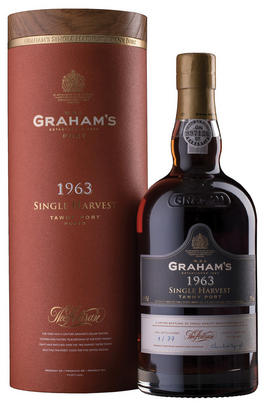
Critics reviews
The 1963 Single Harvest Tawny Port from Graham’s is a bottling of four barrels with an average age of 75 years. It has a slightly paler colour than the 1969 from Cockburn’s tasted alongside and feels conservative by comparison, offering subtle walnut, marmalade, cigar humidor and mandarin.
The palate is medium-bodied with an attacking, feisty, spicy opening. There are hints of cumin and marmalade, joined by clove and ginger towards the cohesive finish. The vigour demonstrated by the palate actually makes me desire more fireworks from the aromatics. Tasted at the Symington Tawny Port tasting at the Tower of London.
Drink 2018 - 2024
Neal Martin, Vinous.com (December 2018)
The 1963 Single Harvest Tawny Port, not yet bottled when seen and set for release in 2019, is a field blend with 127 grams of residual sugar. It is a very different wine stylistically than the overachieving 1994; this is less rich but has a few cards up its sleeve.
It adds more of that beautiful complexity that great old Tawnies acquire—molasses, dark chocolate, seared caramel. It's relatively fresh for the age, too. It has plenty of power and fine acidity supporting the fruit as well. This is pretty beautiful. It will last indefinitely, barring cork failure.
Drink 2018 - 2060
Mark Squires, Wine Advocate (July 2018)
Shown to contrast with the 1963 vintage. Aged for over half a century in seasoned oak casks with an average age of 75 years that have been maintained by Graham’s own team of eight coopers. See picture of the relative colours of the vintage and single harvest tawny 1963s.
Charles admits it’s difficult to say which he prefers (vintage or tawny); I think I prefer the old tawny. Firm finish, very fresh and lively. Some light astringency on the end. Less sweet and smooth than the vintage wine but very powerful. Very long indeed. Very sweet start and then a dry, fresh finish. Lots of freshness.
Jancis Robinson MW, JancisRobinson.com (December 2018)
This is glorious. Superb depth and finesse with balance and density are so fitting for the greatness of the legendary 1963 vintage. Full-bodied, very sweet yet focused and showing just a hint of tannins. Very long and sweet on the finish. I love the complexity and subtlety of caramel, butterscotch and hints of dried fruits. Fantastic.
Drink now
James Suckling, JamesSuckling.com (September 2018)
About this WINE
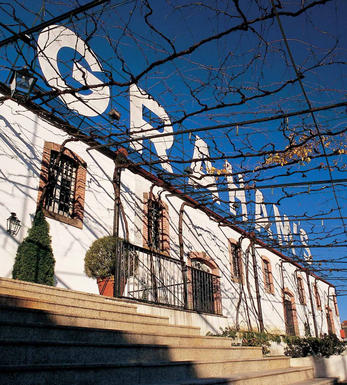
Graham
W & J Graham was originally a Glasgow-based textiles firm, founded by two brothers William and John Graham, which became port shippers in the early 1800s. The family already had extensive business interests in Scotland and India but they decided to channel their considerable resources and energy towards the pursuit of the Port industry.
Later that century, a young Scot called Andrew James Symington emigrated to work for Graham's, but, losing interest in textiles, he became a successful port shipper and his descendants today now own Graham's, which is the jewel in the crown of the Symington Group.
The Symington family’s ancestry in the Port trade spans a period of over 350 years, through 13 generations with 5 members of the family currently actively involved in Graham’s day to day management.
Throughout the 19th century Grahams rapidly grew and went from strength to strength and in 1980 they became one of the first Port companies to invest in Upper Douro vineyards with the acquisition of Quinta dos Malvedos. Since then Quinta dos Malvedos has been recognized as one of the Douro Valleys finest ‘river quintas’.
The Port wines from Quinta dos Malvedos form the backbone of Graham’s renowned Vintage Port in declared years. The vineyard produces Ports with floral characteristics, opulent blackberry fruit aromas backed by well balanced tannins.
Graham's Vintage Ports are the epitome of richness and concentration, and this is reflected right through their range of wines from ruby to vintage classics. They are Port wines with innate quality and potential for long-term ageing.
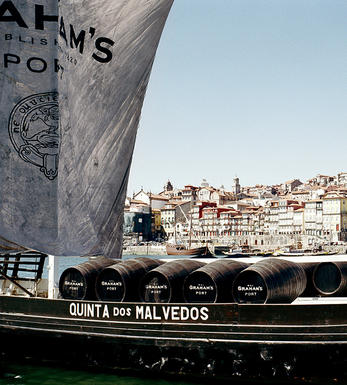
Vintage Port
Vintage Port accounts for only a small percentage of the total Port production - which includes Tawny, Ruby, Late Bottled Vintage, Single Quinta Vintage styles, among others - but is the finest, longest-lived and most expensive style that is produced. The best are as good as any wine in existence.
With the exception of legendary vineyards like Quinta do Noval Nacional and Quinta do Vesuvio, Vintage Port is made from a blend of wines from a producer's finest plots. It is aged for around 18 months in wooden casks before bottling; from then on the watch-word is patience. At least 15 years ageing – and for the top wines it will be significantly longer – is required before the tannins, spirit and fruit are fully integrated. Indeed, the finest examples can last well over 50 years.
Vintage Port is only made in exceptional years (normally around three times per decade) with considerable stylistic variation between different years and shippers. However, they all share a sweet, warming, spicy richness, power and complexity. In other good but not great vintages, many shippers produce a Single Quinta Vintage Port from their finest vineyard. These are made in the same way and have the same style as Vintage Port but tend to mature faster and are less profound. All Vintage Port throws a sediment as it matures, and thus requires decanting.
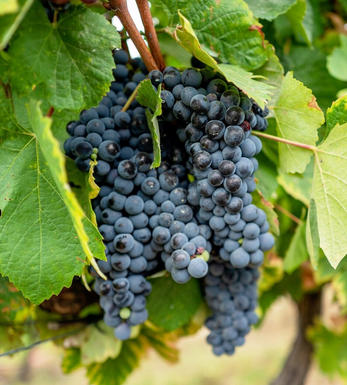
Port Blend
There are around 40 different grape varieties permitted in the production of Port - however the vast majority of Ports are produced from a blend of 5 grapes - Touriga Nacional, Touriga Francesca, Tinta Barroca, Tinta Roriz, and Tinto Cão.
Touriga Nacional produces small, dark-skinned grapes that produce opaque black wines of great extract and high tannins - it gives grip, body, and structure to the blend.
Touriga Franca has a thinner skin and consequently produces wines lighter in colour and tannins than Touriga Nacional. It contributes fruit, aroma, suppleness and roundness.
Tinta Roriz is the Portuguese name for Tempranillo and its high sugar content and low acidity contribute colour and fruit.
Tinta Barroca which is normally grown at highish altitudes and on north-facing slopes, is prized for producing wines of delicacy, finesse and with smooth, velvety fruit. It brings elegance and sweet, ripe fruit to the final blend.
Finally Tinto Cão produces fine and complex wines, though it is probably the least important of the 5 grapes as its painfully small yields have reduced plantings to almost insignificant levels.


Buying options
Add to wishlist
Description
The 1963 Single Harvest Tawny Port from Graham’s is a bottling of four barrels with an average age of 75 years. It has a slightly paler colour than the 1969 from Cockburn’s tasted alongside and feels conservative by comparison, offering subtle walnut, marmalade, cigar humidor and mandarin.
The palate is medium-bodied with an attacking, feisty, spicy opening. There are hints of cumin and marmalade, joined by clove and ginger towards the cohesive finish. The vigour demonstrated by the palate actually makes me desire more fireworks from the aromatics. Tasted at the Symington Tawny Port tasting at the Tower of London.
Drink 2018 - 2024
Neal Martin, Vinous.com (December 2018)
wine at a glance
Delivery and quality guarantee